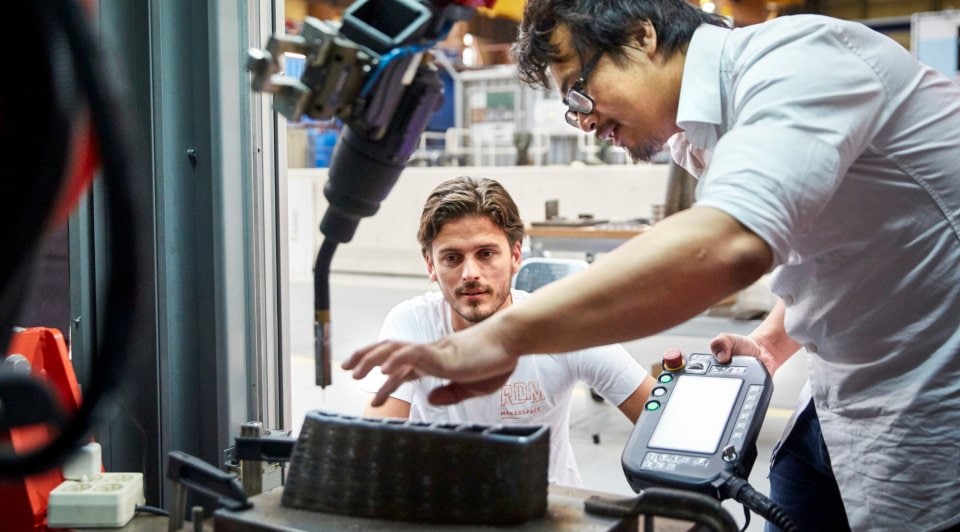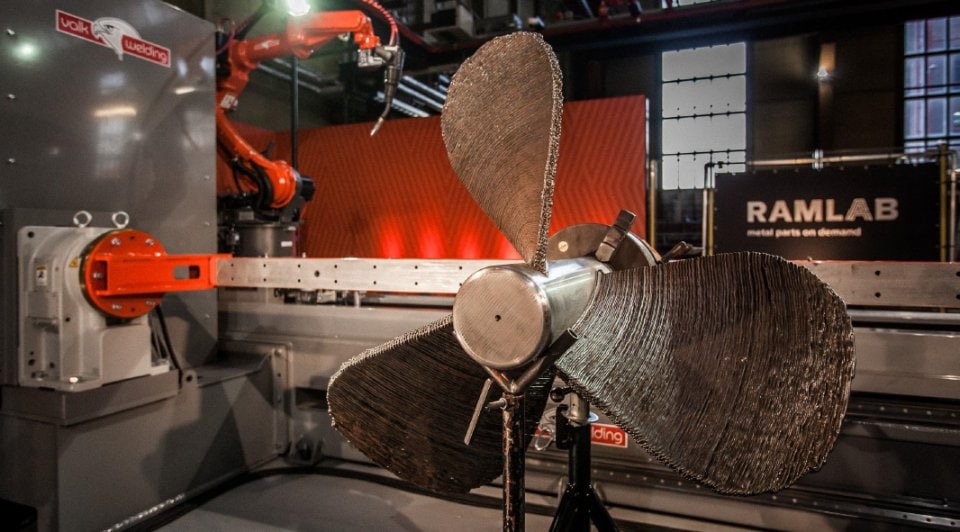Worldwide Sites
You have been detected as being from . Where applicable, you can see country-specific product information, offers, and pricing.
Keyboard ALT + g to toggle grid overlay
Manufacturing large metal industrial parts
As the largest port in Europe, the Netherlands’ Port of Rotterdam is one of the most important intersections for the flow of cargo in the world. It offers the region’s best connections to global ports and handles over 460 million tons of cargo a year, so it’s imperative that the facility and ships run smoothly.
Currently, if a vessel comes in to port needing a replacement part—a propeller, for example— it can take weeks or months to order and deliver, costing companies millions of dollars while they wait. To tackle this challenge, the Port opened the innovative Additive Manufacturing Fieldlab (RAMLAB), an onsite facility which includes a pair of 6-axis robotic arms capable of additively manufacturing large metal industrial parts. The team at RAMLAB works with a dedicated network of hardware and software partners to help the Port stay on course to become the smartest port in the world.
Hybrid Manufacturing as key to innovation
The RAMLAB has produced the World’s first class-certified, 3D printed ship propeller in the maritime industry. The ship propeller was made using a hybrid manufacturing process combining additive manufacturing with subtractive machining and grinding techniques. The project started with a pair of 6-axis robotic arms and a directed energy deposition (DED) additive process and then finished with CNC machining and polishing to achieve tight tolerances. Best of all, this was done within days and with minimal waste—all without losing performance or precision.
As a main software partner, Autodesk has played a key role in developing RAMLAB’s innovative hybrid manufacturing approach, which entails combining additive and subtractive manufacturing. This style enables RAMLAB to pursue faster fabrication options: 3D printing large ship components in metal and then finishing the pieces using traditional CNC milling and grinding methods within a matter of days, saving time and money without sacrificing precision or performance.
3D printed propeller passed certification with flying colors
Since the initial prototype was developed in 2017, the propeller has been updated both in production method and throughput time over the last few months. The final part has been subjected to a series of grueling tests in the last couple of weeks having been fitted to one of Damen’s tugboat vessels (Stan Tug 1606). These tests included speed trials, bollard pull and crash stop testing, which involved going from full throttle ahead to full throttle reverse –the heaviest loading that a propeller can experience during normal operation. Overseen by certification body Bureau Veritas, it passed these tests with flying colors. The now unveiled ‘final’ version is officially class-approved by Bureau Veritas.
"With the work being done at RAMLAB, the group hopes to accelerate the cross-industry adoption of hybrid manufacturing for making large-scale parts on-demand. Our aim is to make the Port of Rotterdam not just an important gateway for Europe, but also a leader in the development of new manufacturing methods. Autodesk is a key partner for us due to its expertise in how to design and manufacture using both the latest additive manufacturing techniques and more traditional CNC and machining methods."
- Vincent Wegener, Managing Director, RAMLAB



